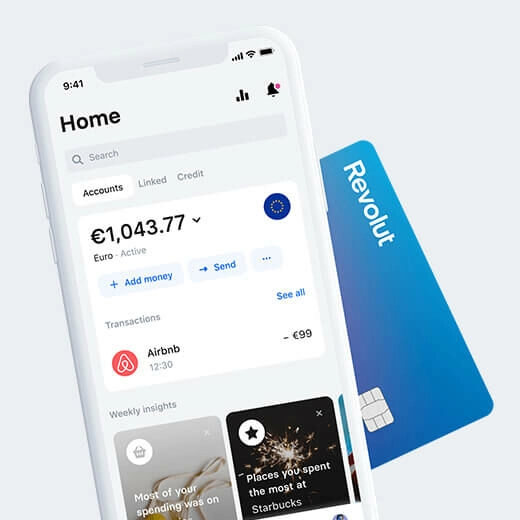KINTO Digital Solutions is a software company that initially started as a carpooling app. Now, the company delivers a variety of digital mobility solutions and services in Europe, with its earliest markets being the UK and Italy. KINTO's solutions are available in nine European countries, and the company is looking forward to expanding to more new markets in Europe and beyond.
The mobility industry has been rapidly changing over the course of the last five years. The emergence of electric vehicles, novel transport modes, and a significant drop in car ownership in large cities has made companies, including KINTO Digital Solutions, widen the scope of their services to remain competitive.
“Cars are transforming from owned objects into occasionally used services,” says Guthrie Watson, Head of UX Design at KINTO Digital Solutions. Lokalise was curious to learn more about how the company stays competitive in the ever-changing mobility industry and the role of localization in KINTO's success.

From spreadsheets to design-stage localization
Guthrie has been with KINTO Digital Solutions since the very beginning. He was the only one dealing with the design-related tasks back in the day – just as you'd expect from someone working at a startup with limited resources. Now, as KINTO and its team have grown, Guthrie focuses on the UX of the company's products.
Asked about localizing KINTO's services, Guthrie tells us that they now localize two apps – KINTO Ride and KINTO Join. The Ride app was launched as a pilot in 2021 in Germany and Portugal, but the Join app has been around for longer and has a lasting presence in the UK, Italy, and other European markets.
While still only operating in the UK, KINTO Digital Solutions began looking for efficient ways to build a presence in new countries. Localization became that way. They tried it with spreadsheets, but it was too awkward and time-consuming. Such an approach required a far bigger team than KINTO had at the time. So, the company started looking for an automated solution.
“We looked at three different TMS, and Lokalise was one of them. We needed an easy way for the developers to manage the translation keys, and what Lokalise offered made the most sense to us.”
Guthrie adds that the team initially used the most basic level of Lokalise services and then grew from there: “It was important that we took full advantage of the Lokalise platform over time.”
Now the company uses Lokalise for as many translation and localization tasks as possible and has shifted to a design-stage localization approach. Guthrie says that this change, alongside hiring a new translation agency, which focuses on UX and has previous experience with Lokalise, has brought a new level of translation quality:
“As we switched to design-stage localization, I realized that copywriting is a critical part of the UX, and our success largely depends on its quality. Getting the base language’s copy right is the key. Then, we can hire an experienced translator and receive the translated copy, resulting in a great UX regardless of the market we're in.”
We looked at three different TMS, and Lokalise was one of them. We needed an easy way for the developers to manage the translation keys, and what Lokalise offered made the most sense to us.
Figma and a clear taxonomy for translation keys
With KINTO's new approach to localization, designers are much more involved in the process than before. Guthrie explains that the main aim of the transformation was to take away the localization burdens from developers, which KINTO successfully achieved.
“We've zeroed out the time developers spent on dealing with translation and localization management and fixes thanks to Lokalise. Developers can now work solely on their direct responsibilities.”
Asked about the third-party integrations that KINTO's team uses with Lokalise, Guthrie names the Figma plugin. The team had used Adobe XD, but its roadmap for product improvements didn't align with KINTO's needs, so they opted for Figma instead.
“I'd say that Figma is now the industry standard for product design. We began using it company-wide last year, and it has helped us enormously – shared workspaces make all the difference. Moreover, we had to come up with a taxonomy of translation keys. Each designer had their way of working with Figma, so a unified naming scheme for keys was crucial to avoid chaos. We've simplified things now.”
We've zeroed out the time developers spent on dealing with translation and localization management and fixes thanks to Lokalise. Developers can now work solely on their direct responsibilities.
Improved translation quality and flawless UX
The new approach to translation and localization, together with hiring a new translation agency, has significantly improved translation quality and helped KINTO eliminate many content-related problems. Guthrie says that KINTO's long-term expectation is that customer complaints on UX and translations will be reduced to zero, thanks to Lokalise. Up to now, the quality of translations and UX has improved by around 80%.
“We receive considerably fewer comments on the UX and copy of our apps already, and it's the merit of having an efficient TMS in place. Another thing I've realized is that good translation requires a translator from your target country. Local culture impacts language and vice versa, which must be considered when crafting a high-quality UX. Luckily our new translation agency follows this kind of approach.”
Using Lokalise has also benefited KINTO's ability to effectively provide App Store and Google Play assets for new markets. Guthrie says that creating such materials is trickier than it may seem, but Lokalise's auto-complete functionality and translation suggestions have eased the process.
“Automated translations allow our designers to check apps for new languages, understand whether there's enough space for copy in a particular language, and see if any design changes are needed. We now can take care of design concerns before they turn into issues.”

Last but not least, Guthrie emphasizes the important role Lokalise has played in KINTO's growth. He says that with the software in place, the company can add new products without hiring masses of new staff to deal with the content of each new product or feature.
“If we had to maintain translation and localization manually, we could never hire enough people to manage the content. Lokalise allows us to scale and grow in ways that we just couldn't without it.”
Localization made easy.
Try it free or let us show you how it works
Read more case studies

How Lokalise contributed to Revolut's massive growth

ESL Gaming shortens time to market with a centralized approach to translation
Case studies

Behind the scenes of localization with one of Europe’s leading digital health providers
Read more Case studies
Support
Company
Localization workflow for your web and mobile apps, games and digital content.
©2017-2026
All Rights Reserved.

